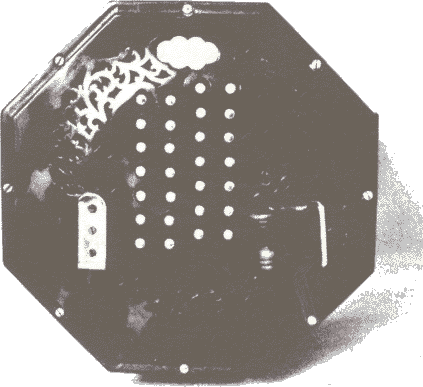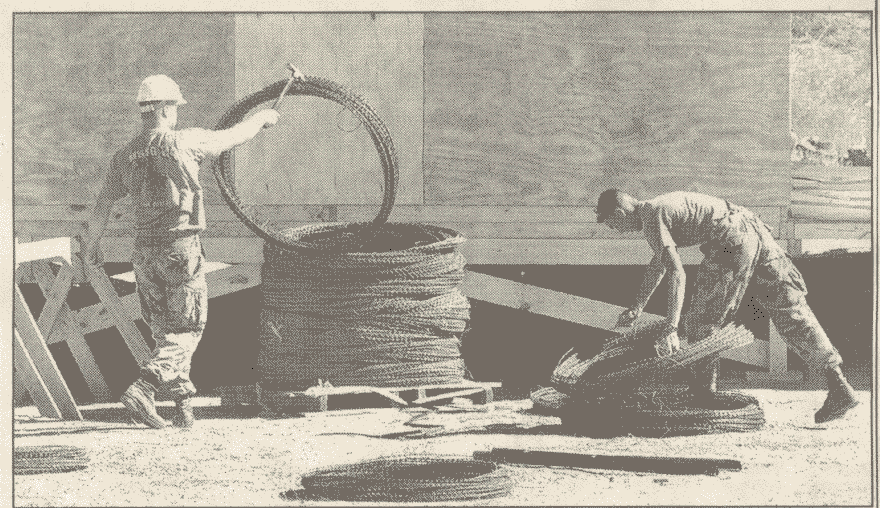Return to home page.
Denney's concertina information page

 History
History
The concertina was invented in 1829 in England by Sir Charles Wheatstone in an effort to improve British military capabilities and frighten small children. Its melodic morceau is best appreciated underwater or from a very, very great distance. Wandering herds of concertinas are often seen near scenes of great disaster such as wars, floods, or large stage shows.
For Frequently Asked Questions About the English concertina, click here.
For the definitive thesis on the obvious superiority of the English concertina, click here.
The Instrument
Closely related to a slinky, the concertina has no fretboard, no keyboard, and no discernable outboard. It has an astonishing array of buttons, which baffle the most knowledgeable and skilled musicians until they realize the key to concertina playing is to punch the buttonboard in a gay and promiscuous fashion.
Note for the Politically Astute
If large shipments of concertinas had been moved into Florida before the presidential election in November of 2000, vast amounts of Florida voters would not have botched their butterfly ballots because their left brain/right brain coordination would have been considerably improved.
 Concertina Construction
Concertina Construction
The diagram to the left shows the interior of the concertina, which requires a pneumatic caisson designed to withstand the external pressures of mud and raw vegetables. People who work on concertinas for long periods of time may be subject to pathologic disorders.
Specialized Teams
Specialized teams of double-jointed, cross-eyed workers use miles of concertina wire in the construction of a single concertina, which can take years, cost thousands, and destroy worlds.
 Care and Feeding of the Concertina
Care and Feeding of the Concertina
Your concertina's diet will strongly affect its sound. Herring and lutefisk are highly recommended for sea chanteys, potatoes for Irish fiddle tunes, etc. Hand wash if at all possible, and speak to your concertina in soothing, gentle tones. Although concertinas are not prone to violence, they can be difficult if provoked and have been known to bray unexpectedly on long, uncomfortable bus rides.
The Music
Concertinas can be used in any style of music, but are best utilized in place of the pipe organ, the trombone, or to mimic the mating cry of disturbed cheetah. More than five concertinas in unison is considered a formal declaration of "pousto", meaning "basis of operations" or "a place to stand", i.e., a declaration of war, academic contention with respect to this matter notwithstanding.*
 The Method
The Method
Many instructors disagree, some suggesting that headgear influences the receptivity of the instrument, others insisting that choreography of the feet while playing is imperative. The "Brunswick" method of bowling one's concertina straight down the lane remains popular with midwestern players, while "concertina whisperers" are highly paid consultants in great demand for those willing to part with their instruments for long periods of exhaustive training and put up with a great deal of mud. Please send us your suggestions for methodology, as expertise is often counterproductive in the curious realm of the concertina.
The Rationale
There is but one excuse for playing this insidious instrument. An old Yugoslavian proverb says, "tell the truth; then run." It is much less difficult to run with a concertina, unless, of course, the concertina insists on finishing its drink.
If you insist on learning to play this vicious little instrument, you might find this essay useful; "How to Learn to Play the English Concertina Using a Gun."
"I...must strongly protest your statement that it takes five concertinas to constitute a declaration of war.
The great 19th century revolutionary German gunsmith Heinrich Wenkelmeyer started the Great Brouhaha of 1853 using but two of these desperate instruments, playing one himself, while his illegitimate offspring,
Jock Weemys, wielded the other. Europe is still suffering the aftereffects of the terrible conflict." --M.P. Nelson, Programmer/Analyst/Historian, Department of Integrative Biology, Thomson Laboratory, Clotho, Lachesis, Atropos -- the only sysadmins that matter
Return to home page.
 Concertina Construction
Concertina Construction
 History
History Care and Feeding of the Concertina
Care and Feeding of the Concertina The Method
The Method